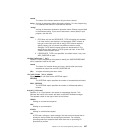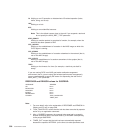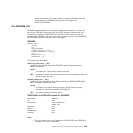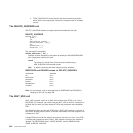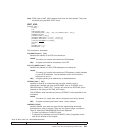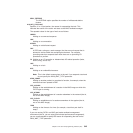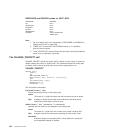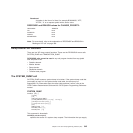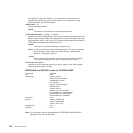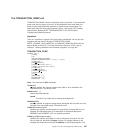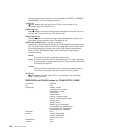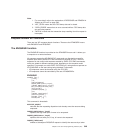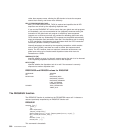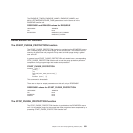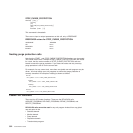
literalconst
A number in the form of a literal, for example B'00000000', X'FF',
X'FCF4', "0" or an equate symbol with a similar value.
RESPONSE and REASON values for CHANGE_PRIORITY:
RESPONSE REASON
OK None
DISASTER None
INVALID None
KERNERROR None
Note: For more detail, refer to the explanation of RESPONSE and REASON in
“Making an XPI call” on page 308.
Dump control XPI functions
There are two XPI dump control functions. These are the DFHDUDUX macro calls
SYSTEM_DUMP and TRANSACTION_DUMP.
DFHDUDUX calls cannot be used in any exit program invoked from any global
user exit point in the:
v Statistics domain
v Monitor domain
v Dump domain
v Dispatcher domain
v Transient data program.
The SYSTEM_DUMP call
SYSTEM_DUMP causes a system dump to be taken. If the system dump code that
you supply on input is in the system dump code table, the dump may be
suppressed. For information about the dump table and how it works, refer to the
CICS Problem Determination Guide and the CICS System Programming Reference
manual.
SYSTEM_DUMP
DFHDUDUX [CALL,]
[CLEAR,]
[IN,
FUNCTION(SYSTEM_DUMP),
SYSTEM_DUMPCODE(name8 | string | "string"),
[CALLER(block-descriptor),]
[TITLE(block-descriptor),]]
[OUT,
DUMPID(name9 | *),
RESPONSE(name1 | *),
REASON(name1 | *)]
This command is threadsafe.
CALLER(block-descriptor)
specifies the source of a system dump request. The information that you supply
Chapter 3. The user exit programming interface (XPI) 345



